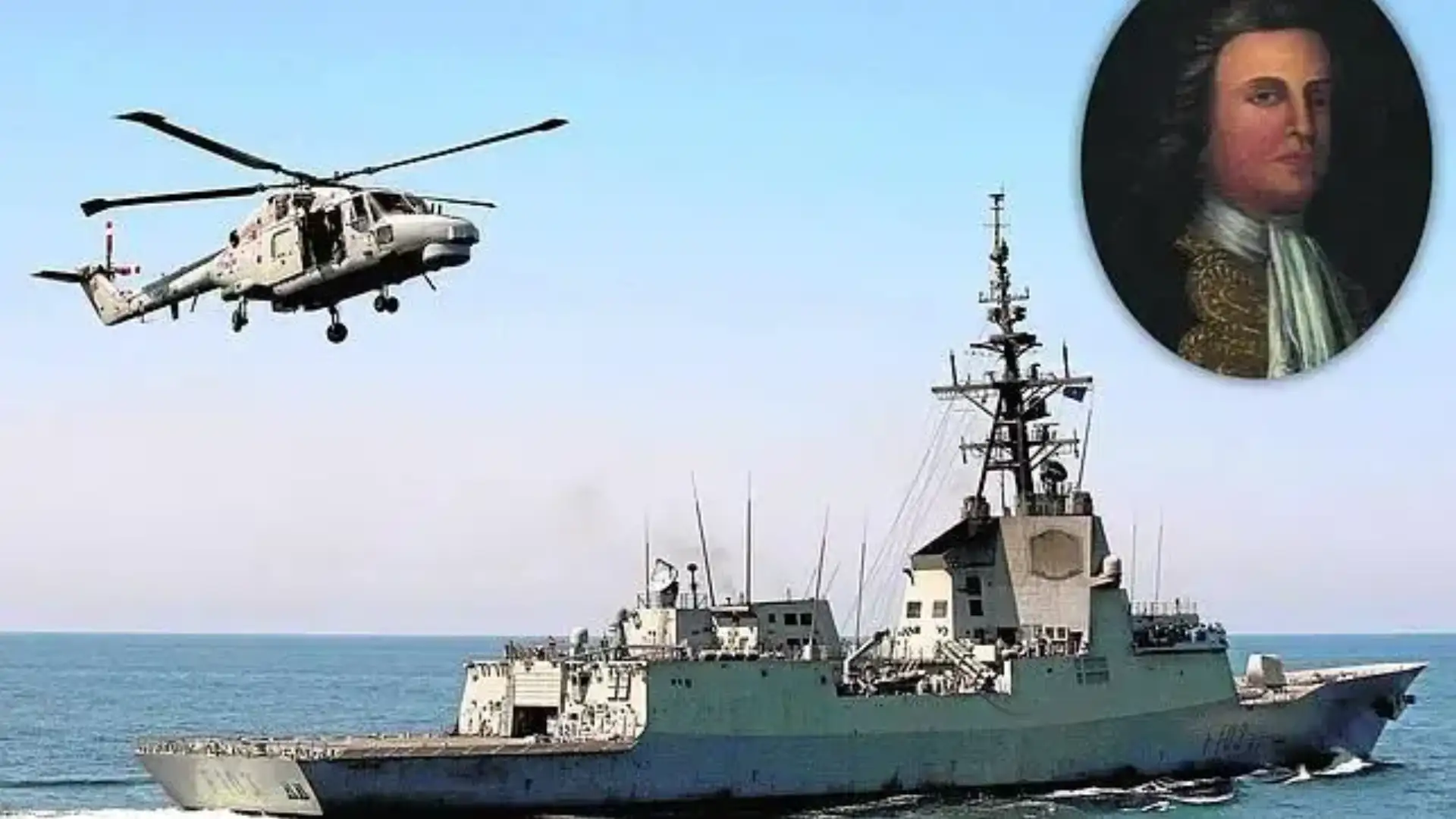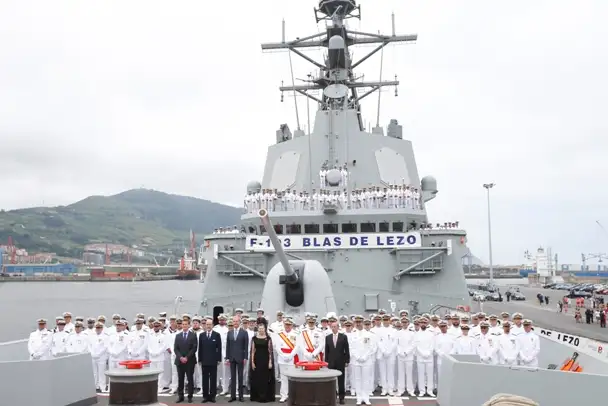
Princess Ana of Orleans gives in Getxo the frigate "Blas de Lezo," the battle flag.
Princess Ana of Orleans gives in Getxo the frigate "Blas de Lezo," the battle flag.
His Royal Highness Princess Ana of Orleans gave the battle flag to the Navy frigate F-103 "Blas de Lezo" in the port of Getxo (Vizcaya), where he has exercised as godmother stressing that the flag "represents all the Spaniards." The castrense ceremony has been extended for about an hour and has been chaired by the Minister of Defence, Pedro Morenés, accompanied by the Secretary of State for Defence, Pedro Argüelles, and the Admiral General General of the Navy, Jaime Muñoz@-@ Delgado and Díaz del Río.
The event was also attended by the Government Delegate in the Basque Country, Carlos Urquijo, and the Attorney General of the Basque Country, Juan Calpasoro, among others. After reviewing the troops, the Minister of Defence, Pedro Morenés, received S.A.R. Ana de Orleans, Duchess of Calabria, at the facilities of the Cruise Pier of the Port of Getxo, to whom, as godmother, the President of the Royal Maritime Club of the Abra and Real Sporting Club has handed over the Spanish flag. After the blessing of the teaching by the episcopal vicar of the Navy, it was handed over to the Commander of the ship, Rafael Arcos Palacios, who has emphasized that with the delivery of the teaching, "symbol of the union of all the Spaniards, the strength of the frigate is committed to serving Spain in any situation, and when the homeland demands it, with the highest sacrifice if necessary."
The Blas de Lezo a fragata of 600 million euros built in Izar (Ferrol)
The frigates, like the other F-100 class Alvaro frigates of Bazan, are the first European warships to have the AEGIS combat system of American origin and a radar capable of detecting aircraft movements within a 500 km radius, which allows them to act on an equal basis with the most modern units of the US Army and to participate in the development of the missile shield. It has the capacity to detect and follow up to 90 mobile targets and to direct air and surface projectiles.
They are the first Spanish ships with high-strength ballistic steel protection casson. It completes its protection with engines mounted on elastic parts, which do not transmit noise to the hull, so they are more difficult to detect by submarines. During the development phase, special emphasis was placed on the design of the ship's forms in order to minimize its "radar echo." The F-100 are also equipped with systems of countermeasures and electronic war Indra Aldebaran, of Spanish design and manufacture, and an AN / SLQ-25A Nixie torpedo acoustic system.
It has two quadruple anti-ship missile launchers AGM-84 Harpoon; two double Torpedo launchers Mk-46; a five-inch Mk-45-type gun with 20 projectiles per minute and 23 km range; and one Mk-41 vertical launcher with 48 cells; four lashes that emit signposts to confuse the enemy missiles; and one SH-60B Seahawk helicopter, prepared for anti-submarine and anti-surface fighting.
The capacity of the frigate would be filled with the installation of an ATAS towed sonar and the integration of the ASROC guided rockets into the Mk41 VLS to complete its ASW capabilities. For this purpose, the frigate has the corresponding weight and space reserve and is expected to have funds for its installation.
The "Blas de Lezo" frigate (F-103) was launched on May 162003the same day that the frigate Méndez Núñez was set in the ground,performing its sea tests between 7 and 11 September 2004.It was handed over to the Navy on December 16, 2004, and conducted missile launch tests (CSSQT) in the United Stateswith the destroyersAmerican USS Howard and USS Halseyin September 2005.
© 2024 Nautica Digital Europe - www.nauticadigital.eu












